Iberian Adventure – Page 07
The View of Toledo
Today is Day 5. We are off on a long (260+ miles) bus ride from Madrid to Granada. Fortunately, the trip was broken up by several stops.
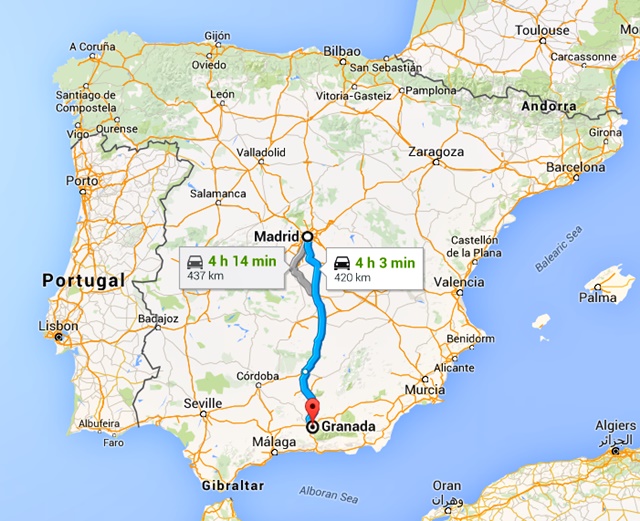
Our first stop was Toledo about 50 miles from Madrid.
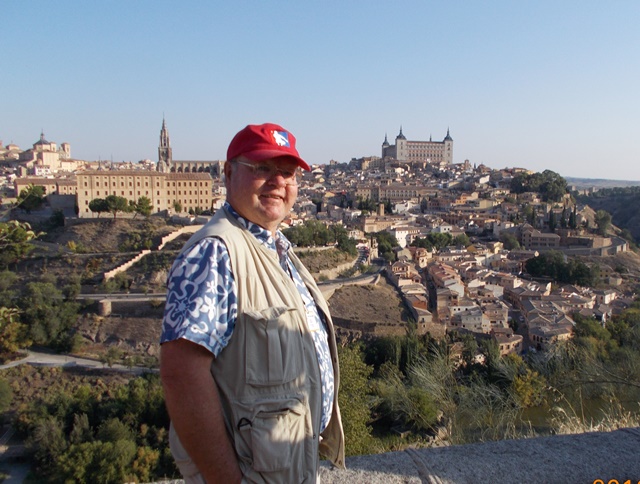 Here is my view of Toledo from a hill across the Tagus river.
Here is my view of Toledo from a hill across the Tagus river.
The Tagus is the longest river in the Iberian Peninsula. It is 645 miles long, It empties into the Atlantic Ocean near Lisbon, Portugal.
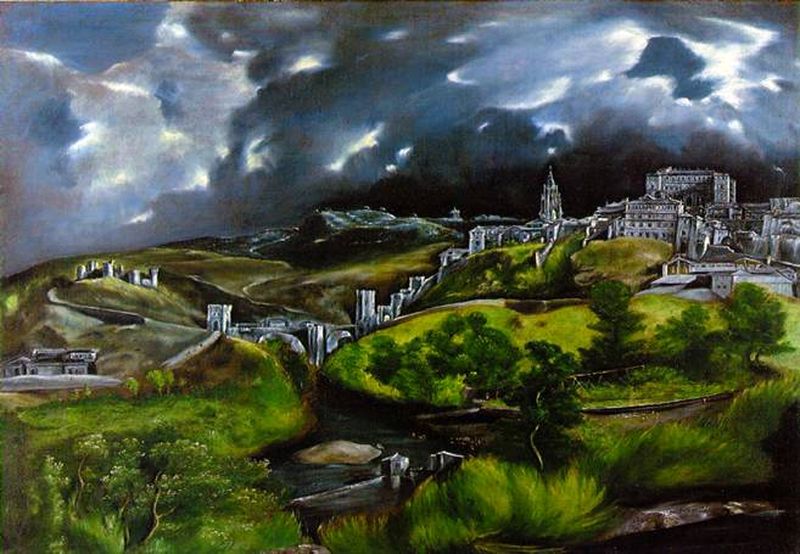
Here is El Greco’s “View of Toledo”. In this, his greatest surviving landscape, El Greco (Domenikos Theotokopoulos) portrays the city he lived and worked in for most of his life. The painting belongs to the tradition of emblematic city views, rather than a faithful documentary description.
A copy of this painting hung in my Uncle Bob’s home. When I was a kid, I would stare at it and wonder about the location, the buildings, the colors, an especially the clouds. I never expected to actually be there.
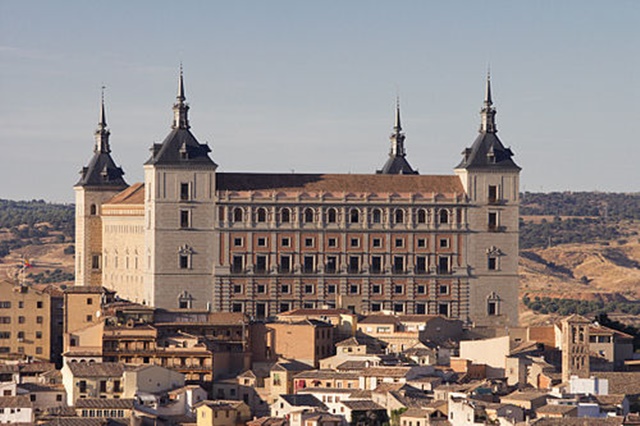
Seen in his painting is the Alcázar of Toledo. It is a stone fortification located in the highest part of Toledo. Once used as a Roman palace in the 3rd century, it was restored under the Holy Roman Emperor Charles V and his son Philip II of Spain in the 1540s.
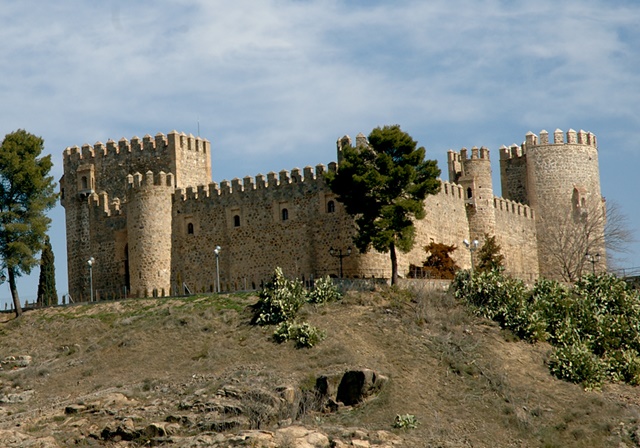
There is an interesting medieval castle on the far left of the painting: the San Servando Castle.
The first building at this site was not a castle but a Visigothic monastery, possibly founded in the 7th century. In the early 8th century Toledo was conquered by the Umayyads (a Muslim dynasty that ruled Moorish Spain from 756 to 1031. The monastery was then turned into an Arab castle.
In 1085 Toledo was conquered by the Christian army of King Alfonso VI of Castile. He rebuilt the structure into a fortified monastery. In 1110 this monastery was destroyed during an attack by the Almoravids. Later that century the ruined complex was donated to the Knights Templar by King Alfonso VIII of Castile. They rebuilt the complex into a fortress.
In the following centuries the Muslim threat disappeared and in 1312 the Knights Templar themselves were dissolved. This led San Servando Castle to lose its importance and to fall into neglect.
In the 19th century San Servando Castle was nothing more than a picturesque ruin. In the 1950’s the castle was restored to its present appearance.
At present San Servando Castle is being used as a youth hostel. It can only be visited as a guest of the hostel.
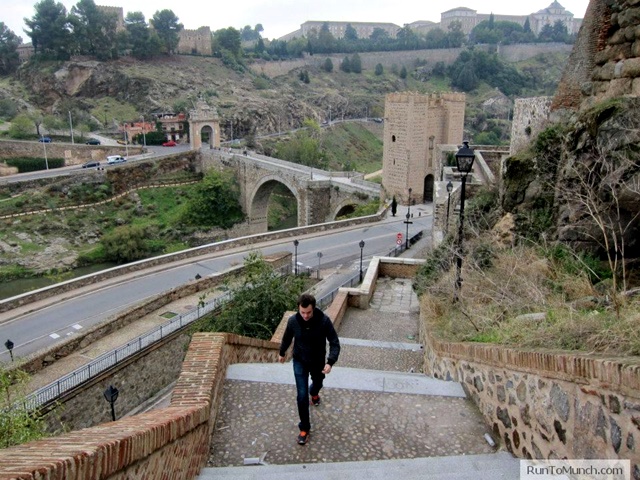
Below the castle you can see the bridge over the Tagus River. The square building in the right center is the Toll Gate, Pay up or you don’t enter the city.
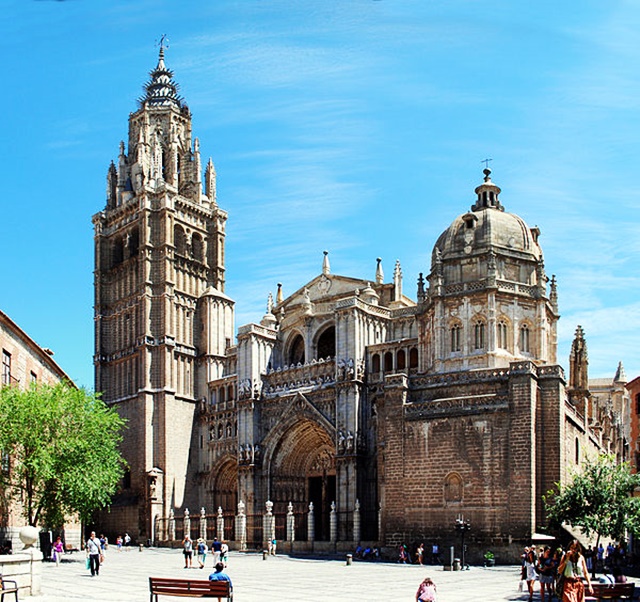
The prominent spire in the painting is the Primate Cathedral of Saint Mary of Toledo, a Roman Catholic church.
The cathedral of Toledo is one of the three 13th-centuryHigh Gothic cathedrals in Spain and is considered, in the opinion of some authorities, to be the magnum opus of the Gothic style in Spain. It was begun in 1226 under the rule ofFerdinand III and the last Gothic contributions were made in the 15th century when, in 1493, the vaults of the central nave were finished during the time of the Catholic Monarchs.
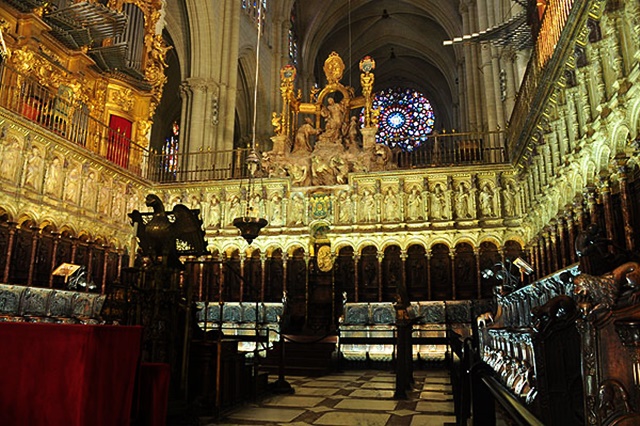
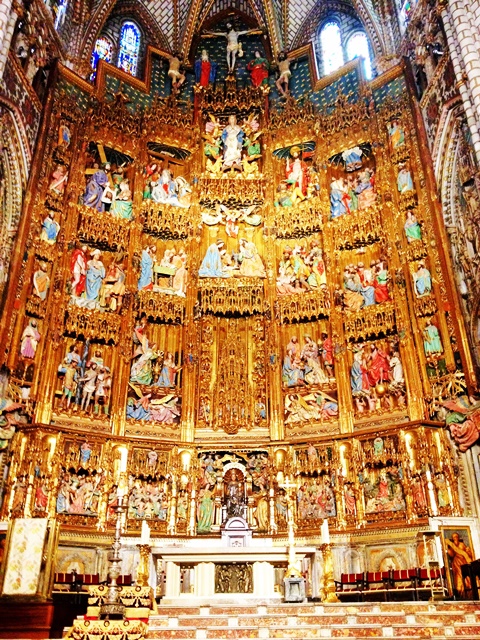
Here are two shots of the interior of the cathedral. The first is of the choir the second is the main altar.
The altar piece of the is an extremely florid Gothic altar piece; it is one of the last examples of this artistic style, which was disappearing as the Renaissance began to take hold in Spain.
The center panel is the widest; it is five storeys tall, and the lines of separation are stair-stepped. The themes of the central panel from bottom to top are: the figure of a seated Virgin and Child plated in silver on the predella (the platform or step on which the altar stands), above this the tabernacle and a Gothic monstrance (receptacle in which the consecrated Host is exposed for veneration) carved in wood, then a depiction of the Nativity, and above that, the Ascension. The whole culminates in a monumental scene of Christ’s crucifixion at Calvary. Further themes of the life and passion of Jesus are represented on the other panels.
Enough art for a while?
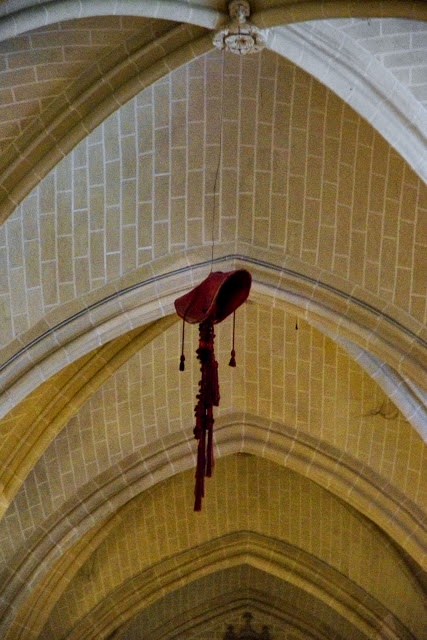
Many Cardinal’s hats were hanging from the ceiling…
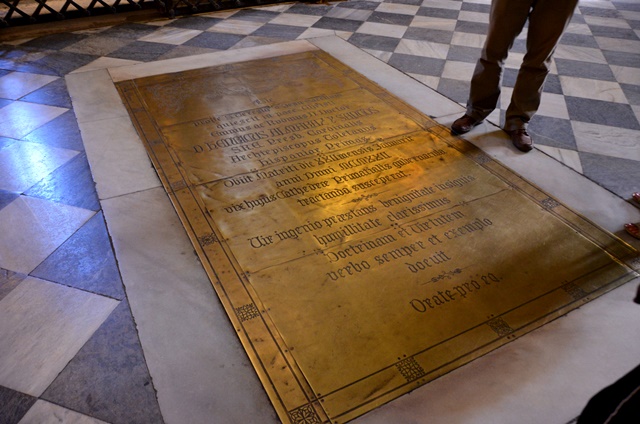
…above their burial vaults in the cathedral floor.
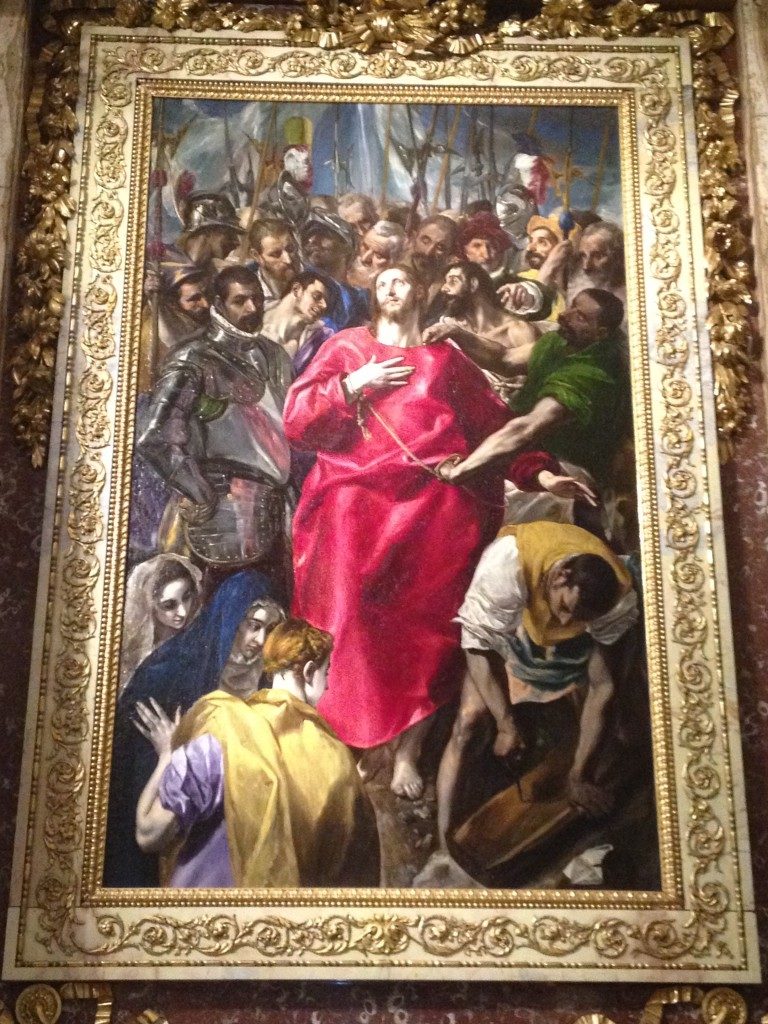
OK, I lied. One more piece of cathedral art: The Disrobing of Christ, otherwise known as the El Expolio by the great artist El Greco. It was made during the summer of 1577 At present, the painting is displayed at the Cathedral’s sacristy.
The artwork presents Christ with his head up high to the heavens, which depicts a deep expression of serenity. This ethereal figure seems rather separated from the other images in the painting, as there was violence and chaos surrounding the holy image. The two other characters in the painting, on the other hand, are presented as though they are arguing about the rightful owner of Christ’s garments.
In addition, there is a man dressed in green who is positioned at Christ’s left. This man holds a rope, and he is about to remove Christ’s robe, in preparation for the holy one’s crucifixion.
A man with a yellow robe bends over the majestic cross, and he drills the hole where the nail is to be inserted and driven through the feet of Christ. Despite the chaos around,
Christ’s radiant face serves as the only calming element in the violence expressed throughout the painting. He was dressed in a brilliant red robe, and it is on Christ’s dress where El Greco exerted the magnificent force and focus of his art.
In the left portion of the painting, the three Mary’s were presented as though they are in agony and distress. The presence of these women was deeply objected by the authorities of the Cathedral, as they are not present in the Gospels.
Despite the gloomy and chaotic situation in this painting, El Greco presented Christ as a tranquil, robust and dominating figure that seemed to be built as solidly as a wall. The artist decided to apply the space elimination method, which was a common technique during the 16th century.
Had enough? I’m hungry and thirsty!
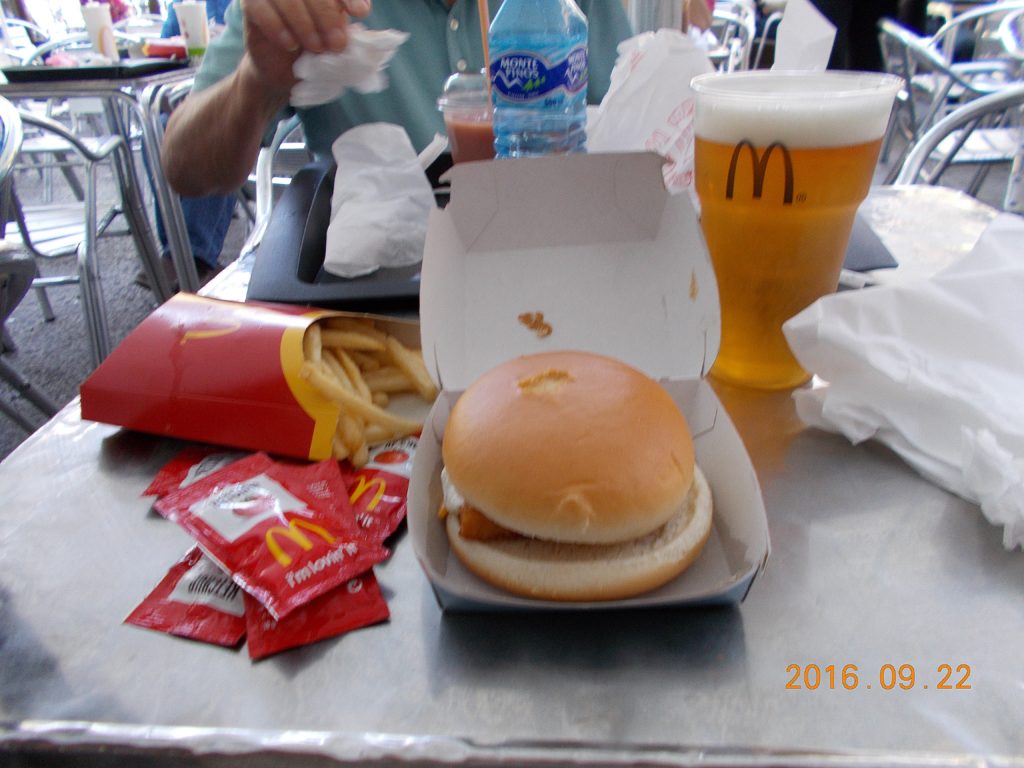
Against the wishes of my two amigos, I stopped at a McD’s for a fish sandwich, fries (with ketchup), and a beer. Yes, you can get a beer at McD’s in Spain.
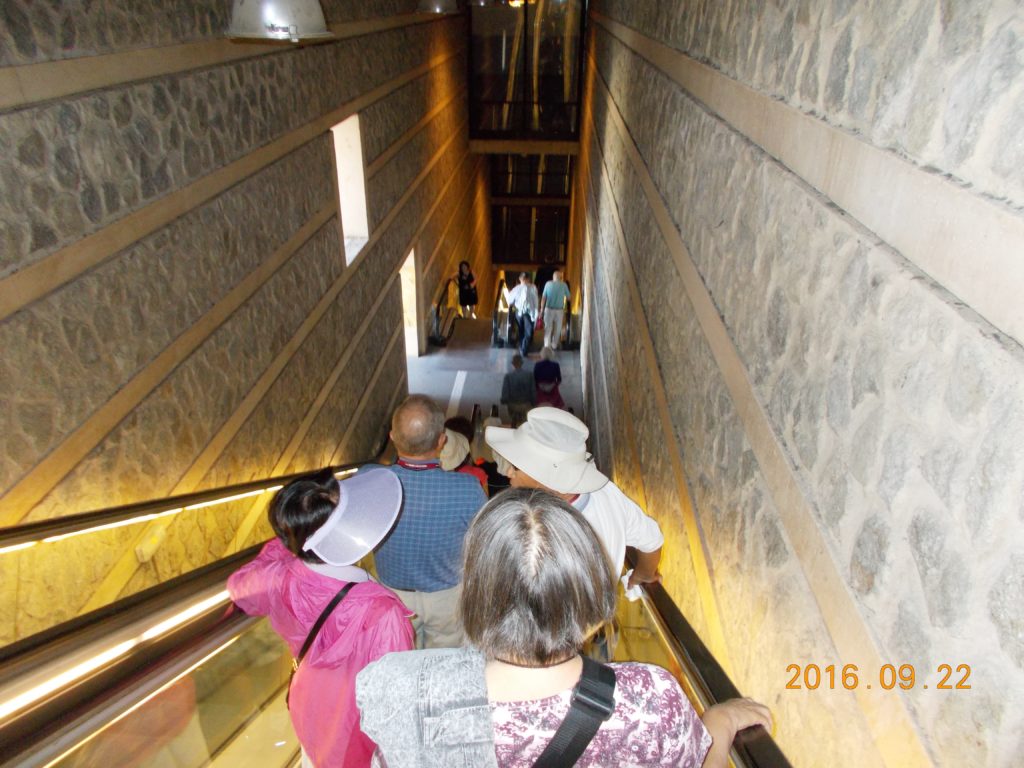
We left Toledo via a very long modern escalator the led to a lower parking lot where we met the bus.
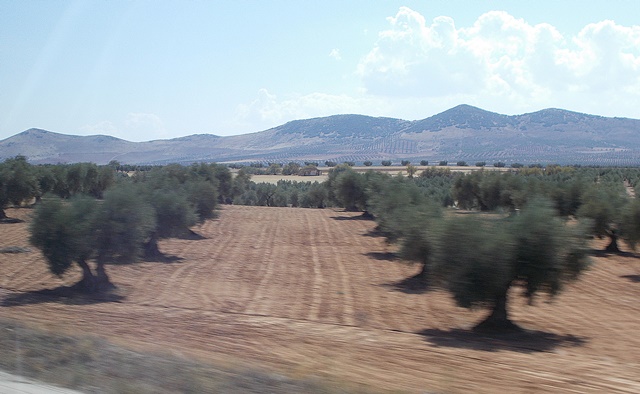
On the long ride (+/-200 miles). we passed miles and miles of olive orchards in a broad valley between two ridges of rolling mountains. It was very dry, which I guess olive like.
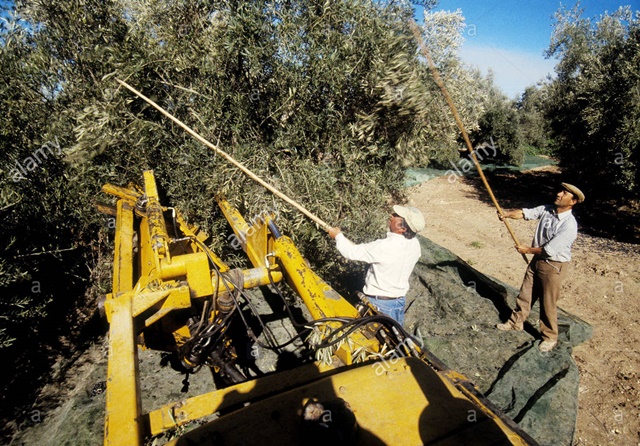
The olives are harvested by a combination of shaking and raking. The olives are collected on a ground cloth. It seems like a labor intensive process.
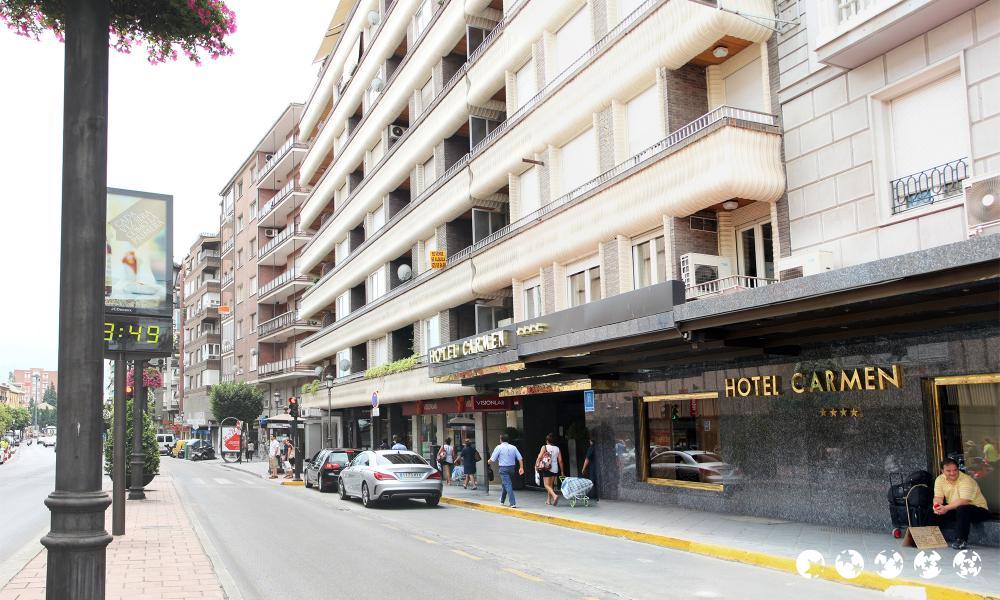
Here is our hotel for the next 2 nights. It was a nice 4 star hotel in central Granada.

Well, I think that’s enough for today. Tonight we had an OK buffet dinner on GCT and tomorrow we will tour Granada.
Go To Page 8
 Here is my view of Toledo from a hill across the Tagus river.
Here is my view of Toledo from a hill across the Tagus river.
















